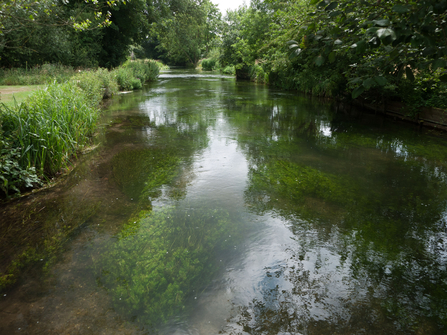It is not difficult to summon in the mind’s-eye a classic English chalk stream: fairy-like mayfly glint in the evening light as they climb up through the fresh still air, they fall back through the forming mist to the crystal-clear river below, only to rise once more in their ‘spinners’ dance. Brown trout break the surface to snatch those that float exhausted on the swirling eddies. A fleeting life now spent. The shallow cool water races over a gravelly bed, weaving through thick patches of aquatic vegetation that waves constantly in the fast-flowing current. In a nearby buttercup-speckled meadow a herd of cows lazily rip at the dew-soaked grass. A grey wagtail darts about their hooves, beak full of flies, it flicks its metronome tail to the beat of the river. My sudden imaginary presence startle a water vole which dives with a loud ‘plop’. And with a glimpse a kingfisher’s perch is emptied, sending an electric blue streak downstream.
My rather romantic description may seem like some dreamy erstwhile vision, but it can be the reality of our beautiful and internationally important chalk-stream rivers with proper and continuing protection.
Of the 210 rivers worldwide, that are classified as chalk-fed, 180 are in Southern England, with 25 in Norfolk – of which the Mun, Ingol, Heacham and Glaven are of global importance due to their assemblages of plants and animals. The Whitewater, a tributary of the Wensum, dissects NWT’s Hoe Rough and Beetley Meadows reserves and is nationally important for the native, white-clawed crayfish. It is also home to a rare variant of brown trout that, due to their isolation, have developed into miniature examples of the species. The Whitewater’s confluence with the Wensum means it joins the longest and most significant Norfolk chalk stream. The Wensum is familiar to many due to its course through Norwich, with it caressing the boundary of NWT’s newest nature reserve at Sweet Briar Mashes. After passing through the city, the Wensum joins the Yare which takes all the credit for carrying one of the country’s most important wildlife-rich rivers on its final leg to Great Yarmouth and out into the North Sea.


